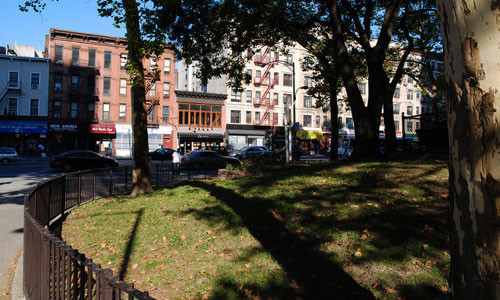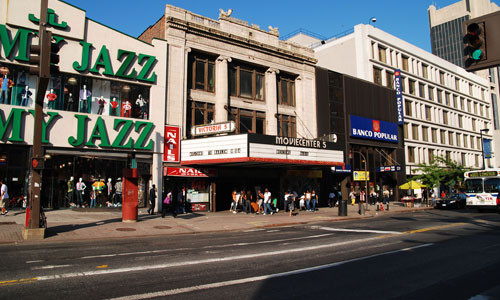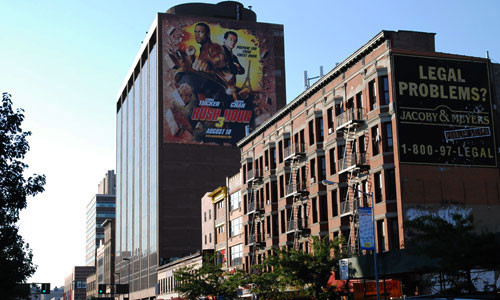125th Street in Harlem is more than just a major thoroughfare in Manhattan; it’s a dynamic blend of transportation hub, cultural landmark, and architectural showcase. For over a century, this iconic street has been the beating heart of African American cultural life, solidifying its place as a must-visit destination and a vital center for the community. The American Planning Association’s recognition of 125th Street as one of the 10 Great Streets in America underscores its enduring significance. This acknowledgment celebrates its resilience through periods of significant population shifts, infrastructure demands, economic downturns, and urban redevelopment initiatives. Today, 125th Street stands as a testament to Harlem’s vibrant spirit, a bustling hub of economic, social, cultural, and transit activity, increasingly designed for pedestrians and enhanced livability.
A Masterclass in Urban Planning and Connectivity
Designed as part of the Commissioner’s Plan of 1811 for New York City, 125th Street is one of fifteen key crosstown routes strategically placed roughly every ten blocks across Manhattan’s tilted north-south axis. However, what truly distinguishes 125th Street is its exceptional connectivity to New York City’s major transportation networks. Stretching from the Hudson River to the East River, it seamlessly integrates with major arteries such as the Henry Hudson Parkway, the FDR Drive, and the Triborough Bridge. Furthermore, it is exceptionally well-served by a comprehensive network of subway and bus lines, making it a highly accessible and crucial artery within the city’s transportation grid.
 General Grant Houses at 125th Street and Amsterdam Avenue in New York City
General Grant Houses at 125th Street and Amsterdam Avenue in New York City
Architectural Diversity: A Walk Through Time on 125th Street
The architectural landscape of 125th Street is a rich tapestry reflecting different eras and styles. Visitors can observe a diverse collection of buildings, ranging from early 19th-century single-family brownstones and classic tenement apartments to spacious warehouses, Art Deco commercial buildings, early 20th-century office towers, and mid-century modern structures. Notably, the predominantly low-rise scale of the buildings along 125th Street creates a more open and inviting atmosphere, contrasting with the towering “canyon” effect found on many other Manhattan streets. This human-scale environment contributes to its pedestrian-friendly character and unique urban charm.
The Harlem Renaissance and Cultural Flourishing
The Harlem Renaissance of the 1920s and 1930s marked a pivotal moment in 125th Street’s history, fostering a significant influx of African American residents and a flourishing of rich cultural traditions. At the heart of this cultural explosion was the world-renowned Apollo Theater, located on 125th Street. This legendary venue became instrumental in launching the careers of iconic Black entertainers who shaped American music history, including Billie Holiday, Ella Fitzgerald, James Brown, Stevie Wonder, and Aretha Franklin. The Apollo Theater remains a vibrant symbol of Harlem’s cultural legacy and a major attraction on 125th Street.
 Historic Victoria Theater on 125th Street in Harlem, NYC
Historic Victoria Theater on 125th Street in Harlem, NYC
Navigating Post-War Challenges and Urban Renewal
Following World War II, 125th Street and its surrounding neighborhoods faced a period of decline. The Federal Housing Act contributed to urban renewal projects and “slum” redevelopment across major US cities, impacting Harlem significantly. While some “superblock” housing developments were constructed along 125th Street during this era, other urban renewal initiatives in the vicinity led to the demolition of historic Harlem housing and further disinvestment in the area. This period presented significant challenges to the street’s vitality and community fabric.
Revitalization and a Vision for the Future of Harlem’s Main Street
Today, 125th Street is experiencing a significant resurgence, driven by new developments and a renewed focus on its identity as a regional business district and a premier cultural, arts, and entertainment destination. According to Edwin Marshall from the New York City Department of City Planning, extensive reviews are underway to enhance “Harlem’s Main Street.” However, this revitalization is carefully planned to preserve the street’s historical significance as a community-oriented and pedestrian-friendly space. Complementing the city’s zoning initiatives, the 125th Street Business Improvement District is spearheading projects like enhanced street lighting and lampposts. Furthermore, the Harlem Community Development Corporation is collaborating with the New York State Office of General Services to redesign the plaza in front of the Adam Clayton Powell, Jr. State Office Building, incorporating trees for shade and a more welcoming environment. The plaza already hosts a popular farmer’s market during the summer, bringing fresh, regional produce to 125th Street and fostering community engagement.
 125th Street streetscape between 5th and Lenox Avenues showcasing pedestrian activity
125th Street streetscape between 5th and Lenox Avenues showcasing pedestrian activity
Future developments on 125th Street are deeply rooted in community priorities, aiming to shape both the physical and social environment into an even more walkable, livable, and shoppable space. This commitment ensures that 125th Street’s recognized greatness will not only be maintained but will continue to evolve and flourish, serving as a vibrant heart of Harlem for generations to come.
